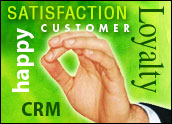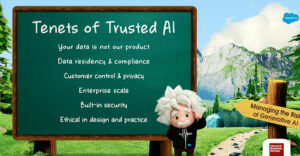
Wouldn’t it be great if customers who had questions about your products could get the answer from other customers? Wouldn’t it be wonderful if customers brainstormed on ways you could improve your service processes? Wouldn’t it be tremendous if you could see trends in service needs and adjust your processes to meet them earlier and more effectively?
Here’s another question: Wouldn’t it be great if more businesses realized that all this — and more — is already possible if they just cared to investigate it?
The groundwork has been in place for a “social service” revolution for several years now, and while service certainly commands more attention now than it did before the recession, business has yet to fully embrace the power social media could provide it. Even well-publicized, halting steps into social service — like the “Comcast Cares” initiative that keyed on the use of Twitter — have not fully incorporated what is possible with social media into useful data to improve service.
A Step Beyond Social PR
Comcast Cares is an example of what CRM Essentials President Brent Leary deemed “Social PR.” Although the use of Twitter helps the company respond quickly to customer issues, it’s not part of a larger effort to integrate social channels into a revamped service strategy. In other words, people complaining on Twitter get attention faster and better than customers using regular service channels.
Rather, because Twitter has the potential to reach many other customers, it’s important to Comcast to address Tweeters’ problems quickly to reduce the amount of negative noise about the company. While that’s a good thing, a better thing would be to get the entire service mix right so there are fewer frustrated customers and, thus, less of a need to grease squeaky wheels on Twitter or any other social media channels.
And therein lies the challenge and the opportunity represented by the dawn of the social service age. It is an opportunity to blow up your set of service processes like the creaky, rickety, outmoded structure it probably is, and to rebuild it from the ground up with the customer of today in mind. That doesn’t just mean streamlining what you do now — it means incorporating social media to facilitate peer-to-peer service, adding a listening component to your service efforts to predict and anticipate service issues and improve service processes, participating in discussions of service issues that affect your business, and to feed issues raised in online forums and discussion sites into service for proactive action.
All of that has the potential for exciting new ways to improve service and use it not strictly as a patch when things go wrong but to employ it to improve the customer experience. It also has the potential to deliver a greater degree of service without a proportional increase in costs.
Sooner’s Better Than Later
But just as with Social CRM, it’s crucial to have the basics in place before you make the jump to a more socially driven service approach. Without a uniformly effective set of service practices, savvy customers will shift to the channels that get results — not the channels they prefer to work through. That will erode your ability to build loyalty through your service efforts, and it’ll hamper your ability to take advantage of the customer information that’s out there waiting to be tapped. The addition of new functionality and new ideas also represents a chance to examine your service processes, fix what’s broken, streamline what’s clunky and pare away what your customers have outgrown.
Standing between the service structure you have now and the service structure you need for the future is the daunting prospect of a top-down re-design of how service operates in your business. But customers are becoming more social, not less; they expect better levels of service, not the same levels; and they are already talking online about issues that could impact your bottom line, both for better and for worse.
Taking the initiative now and joining the revolution is the logical and lucrative thing to do. The alternative is waiting until the pain of being left become behind becomes too much to bear.
CRM Buyer columnist Chris Bucholtz blogs about CRM at Forecasting Clouds. He has been a technology journalist for 15 years and has immersed himself in the world of CRM since 2006. When he’s not wearing his business and technology geek hat, he’s wearing his airplane geek hat; he’s written two books on World War II aviation, and his next two are slated for publication in 2010.






















































